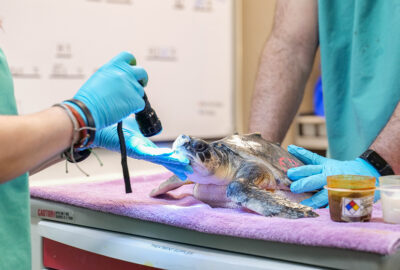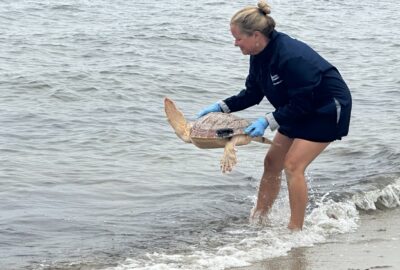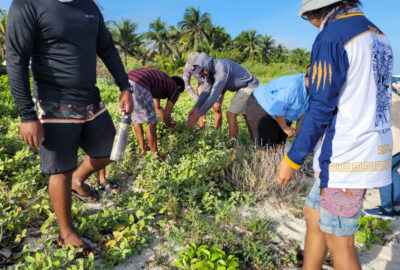Turtle Drills: Practice Makes Perfect
The 2021 sea turtle cold stun season has officially started
By New England Aquarium on Thursday, November 18, 2021

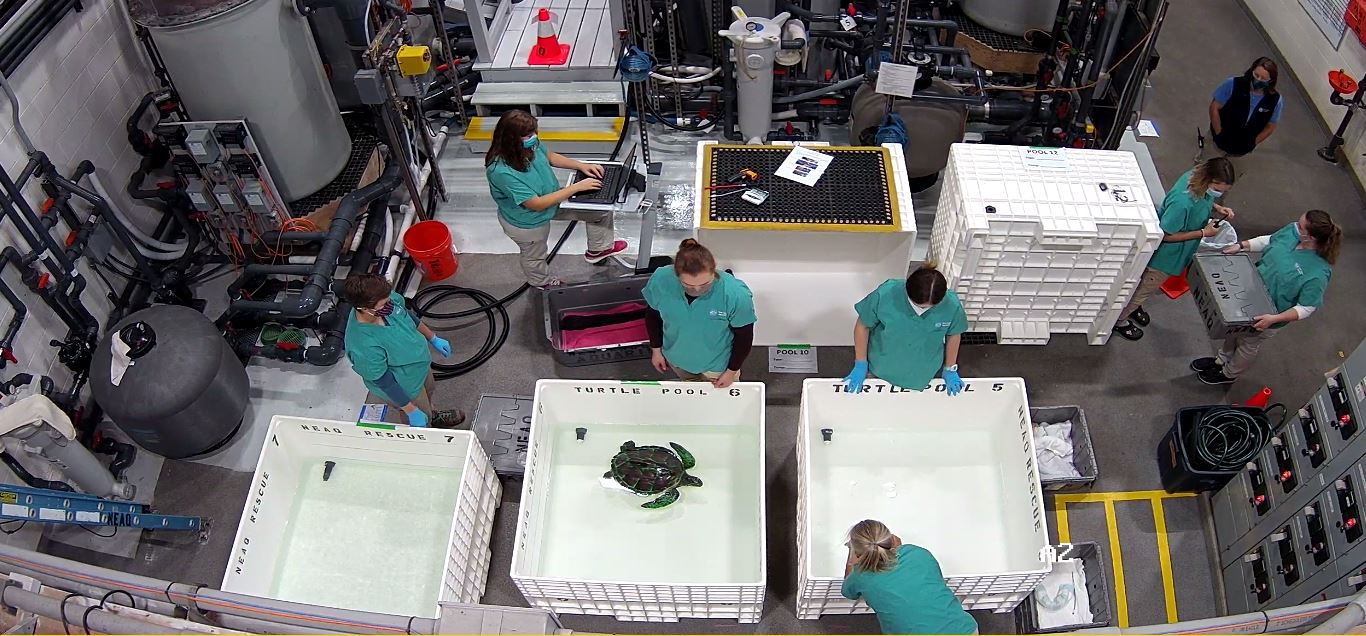
By Marisa Bernal
On Wednesday, November 17, three critically endangered Kemp’s ridley sea turtles were found on Cape Cod beaches by Mass Audubon Wellfleet Bay and Wildlife Sanctuary volunteers, marking the start of this year’s cold stun season. The turtles were successfully transported to the Aquarium’s Sea Turtle Hospital for medical care.
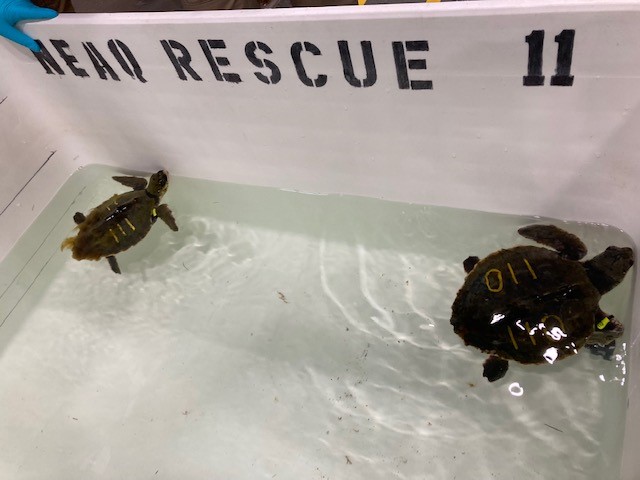
Each year, hundreds of cold-stunned sea turtles wash up on the beaches of Cape Cod. Because of the rapidly changing water temperature and wind pattern, many turtles cannot escape the unique hook-like area of Cape Cod Bay before becoming hypothermic. Starting in November, volunteers comb the beaches looking for stranded turtles.
According to Senior Biologist Linda Lory, the internal average temperature for each arriving turtle was 54°F. The lowest temperature at which a turtle can still have metabolic function is 55°F.
In order to prepare for a smooth first intake, our Rescue and Rehabilitation team has been busy running practice drills at our Sea Turtle Hospital for the last several weeks.
“We have been preparing for a realistic turtle intake. We want everyone to experience the different roles which they will partake in, and make sure that we have a clear chain of communication,” said Biologist Alessia Brugnara.
The turtle drills were run in the three hospital team areas: intake, clinic, and swim. Each team has designated tasks relating to documenting the turtles’ arrival on intake, addressing their health needs, or monitoring their swimming behavior.
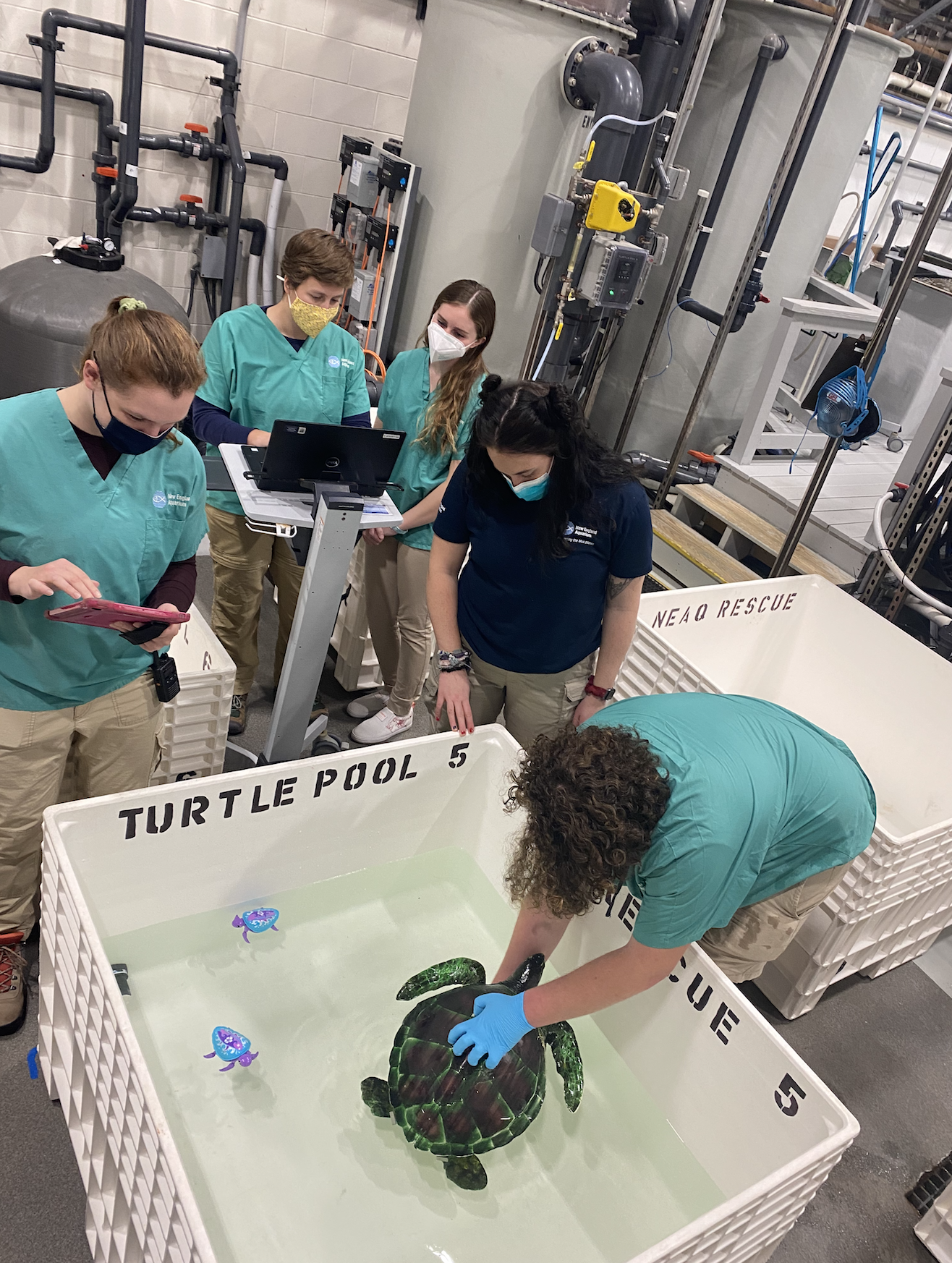
When the cold-stunned turtles arrive at our Sea Turtle Hospital, they come in banana boxes. The intake team removes the boxes from the van, takes photos of each turtle, and marks the turtles for identification using color-coded flipper bands and written numbers on their carapace.
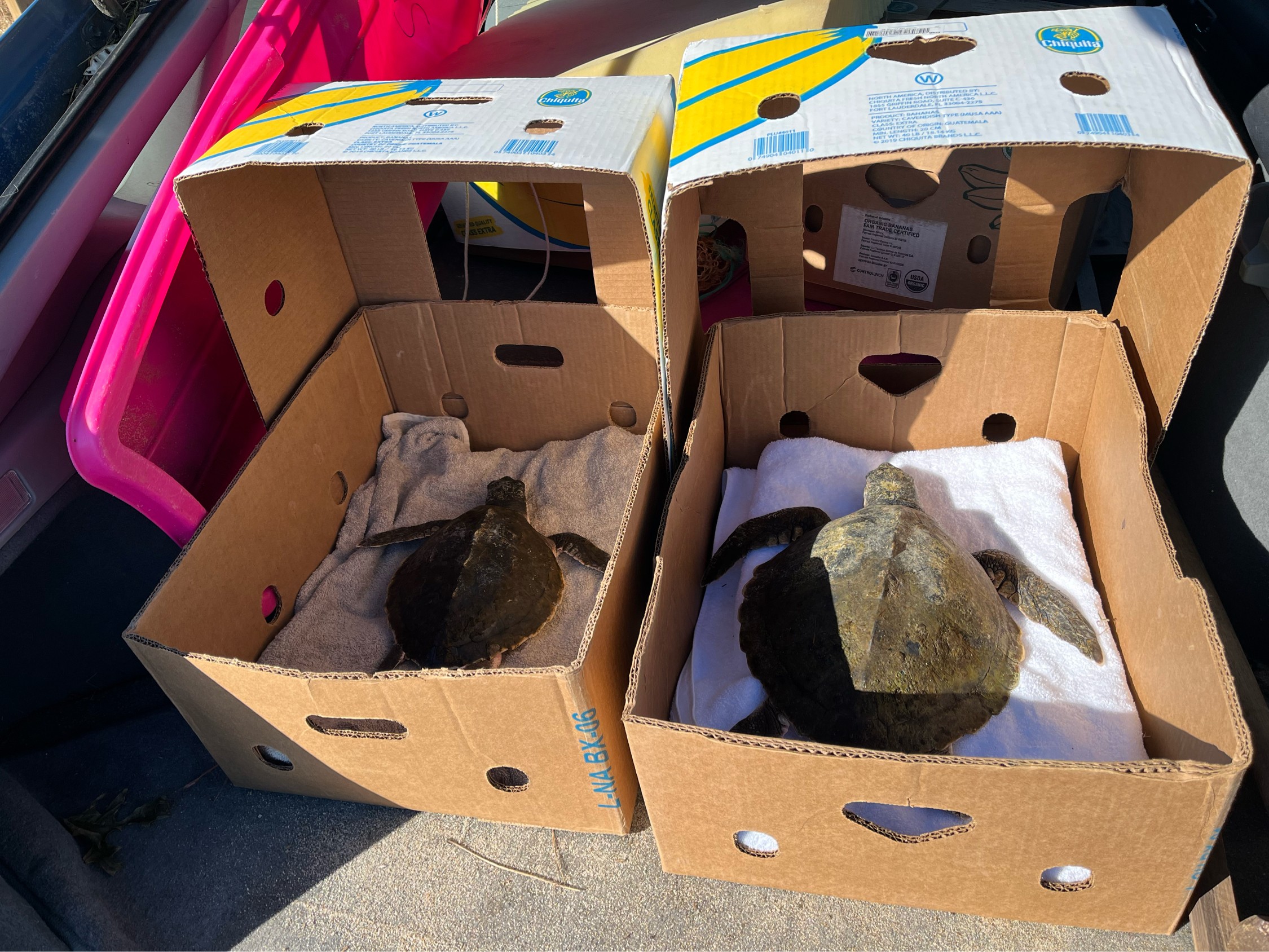
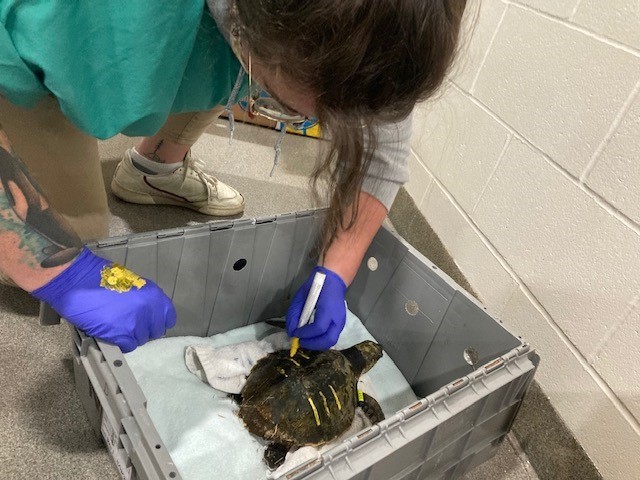
Then, the clinic team identifies the turtles’ injuries and comes up with their care plan. All turtles will have their heart rate and radiographs taken, and some will receive more specialized care based on their needs. All of our turtle medical care is done in partnership with our Animal Health Department.
Next, the swim team fills tanks with 55°F water and lets the turtles swim for 10-15 minutes to gauge how the animal is maneuvering.
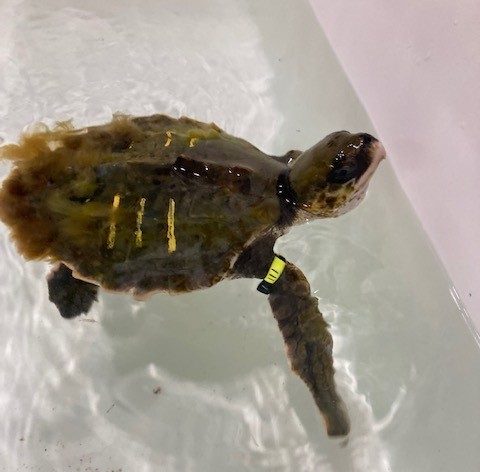
“The three Kemp’s ridley sea turtles that were admitted to our hospital did well in their swim trials and started swimming on their own within five minutes, which is usually the case for our early turtles,” Lory said.
The turtles that come into the hospital are usually hypothermic, and have body temperatures in the 40°F range. According to Manager of Rescue and Rehabilitation Adam Kennedy, the lowest turtle temperature he can recall was 32°F in 2008.
Over the next few days, the turtles will be slowly introduced to warmer water—from 55°F, to 65°F, and finally 75°F. All the turtles are carefully monitored and “dry docked” overnight according to their species and wellbeing. Dry docking involves the turtles staying overnight in a temperature controlled environment, in individual enclosures, and outside of the water. Turtles are safe to stay out of water for periods of time, since they breathe air. While dry docked, each turtle gets fluids to keep them hydrated.
In 2020, there were 569 turtles that passed through our Sea Turtle Hospital from October through January, so the Sea Turtle Rescue & Rehabilitation team’s drills in preparation for the 2021 cold stun season were imperative to prepare new interns and volunteers for a smooth season.
“We had been practicing our roles, running multiple drills a week so that we were like a well-oiled machine, and prepped everything that could be prepped,” Brugnara said.
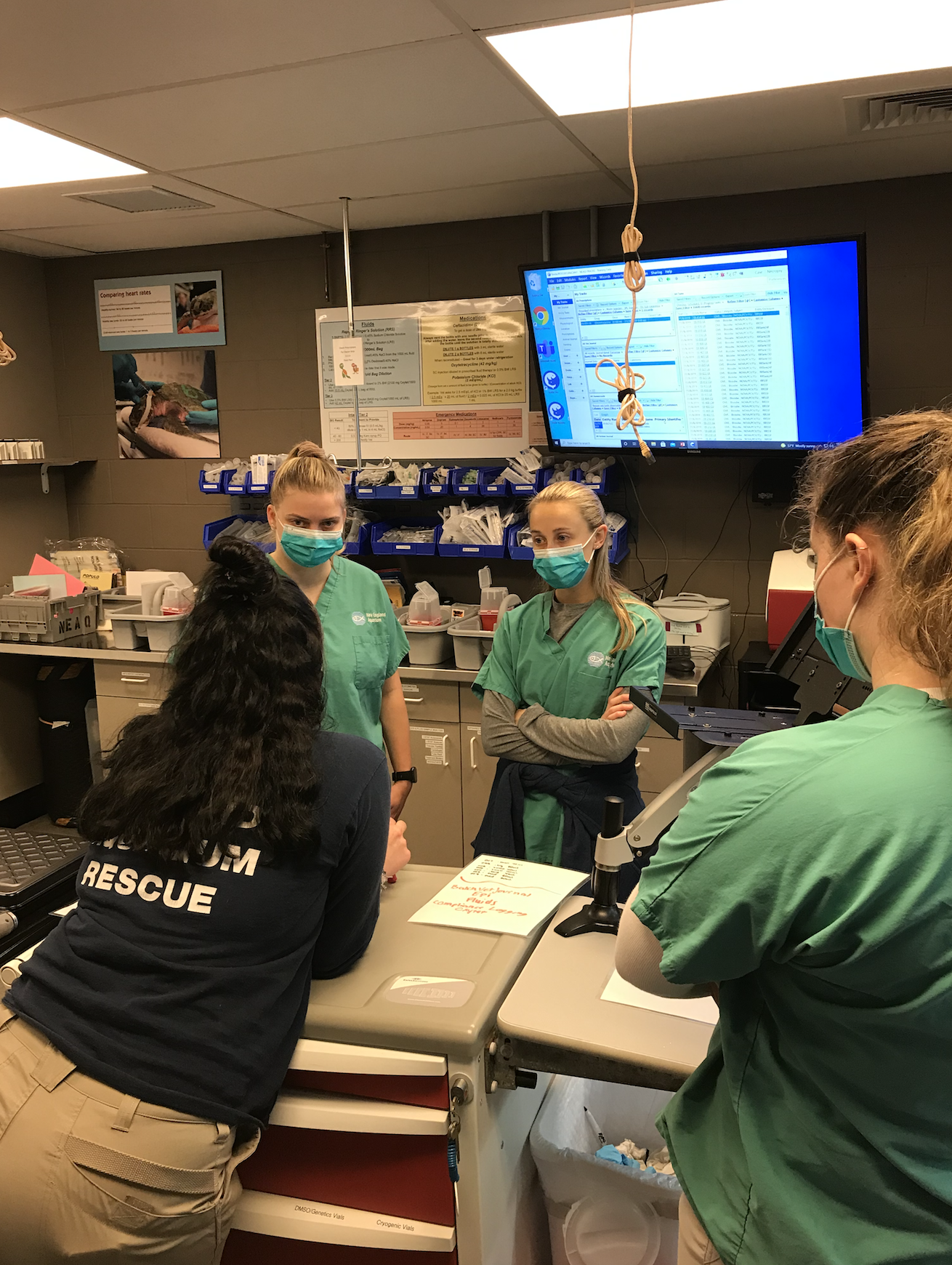
“The drills definitely prepared our interns and volunteers for the real event. All of them knew exactly what needed to be done and everything went seamlessly as it should have. We really do have a great team that is eager, enthusiastic and ready to help save sea turtles,” Lory said.
Stay tuned for more updates as the 2021 cold stun season begins. Follow our social media pages and be on the lookout for behind-the-scenes videos, interviews with our Rescue and Rehabilitation team, and more.

